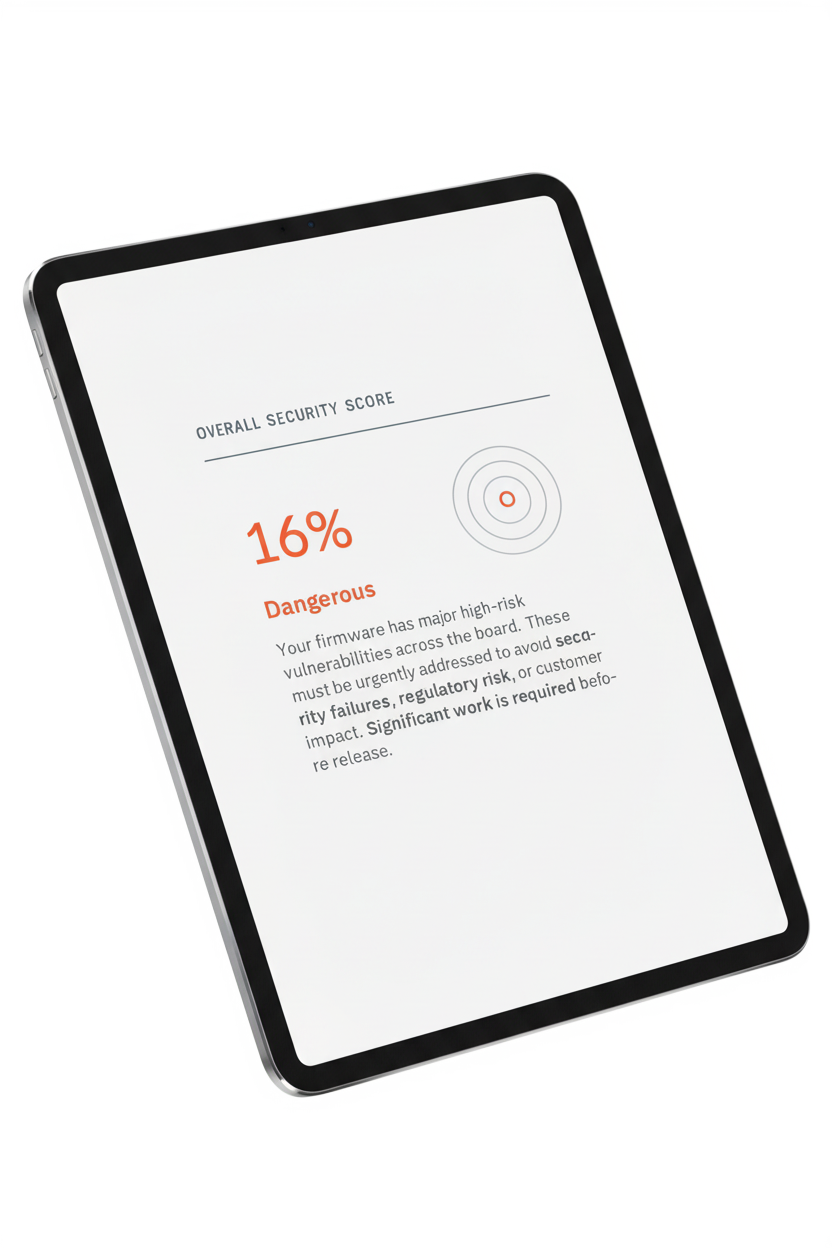Security is not a one-time event, it’s a continuous process. In today’s connected world, embedded devices are everywhere , in cars, medical devices, industrial equipment, powergrids, our homes and defense systems. But as connectivity grows, so does the attack surface. Once-dependable firmware can quickly become a liability if vulnerabilities remain undetected. Radio Equipment Directive (RED) and The Cyber Resilience Act (CRA) are the European Union’s response to this new reality. They require manufacturers to prove that their software and firmware can withstand cyber threats, throughout the entire product lifecycle.
So, how can development teams stay ahead? The answer lies in continuous observability of your embedded software.
1. Security is not static
Every software update, library integration, or compiler change introduces risk. Even if your system was secure at launch, new vulnerabilities can emerge daily. Recent research shows that over 80% of embedded systems reuse open-source components, which means that a single unpatched library can put thousands of devices at risk.
Continuous monitoring enables teams to:
- Detect new vulnerabilities as they arise.
- Trace risks back to specific components.
- Take corrective actions before release or update after deployment.

2. Firmware security beyond the surface
Traditional static analysis tools often scan source code, but firmware vulnerabilities can hide in binaries, beyond what source-level tools can detect. A binary-level analyzer, such as the one offered by Logic Technology, examines compiled code to reveal deeper issues like:
- Password Hash Audit: detects weak or hardcoded passwords in the image
- Malware Analysis: identifies malware within the file system
- Hardening Check: verifies compiler settings and secure coding practices
- Capabilities Review: looks for vulnerabilities in the components of the image (process manipulation, system log access, shell, hooking)
- Kernel Security Check: evaluates kernel security features
- Cryptographic Material Scan: detects crypto keys (private + public) and certificates within the file system
- Buffer overflows or command injection
- Security at kernel level
- Memory leaks
- Compiler settings conform to secure coding practices
By scanning the actual firmware image, developers gain an accurate picture of what’s really being shipped, not just what was intended in the source. With Exein, you can effortlessly scan your entire system for vulnerabilities, detect threats, and secure your devices, all from one powerful platform.
3. Cyber resilience, the new quality standard
The CRA introduces a paradigm shift: cybersecurity equals product quality. Manufacturers must now prove that their products are both functionally safe and digitally secure. That means continuous vulnerability monitoring isn’t just a technical preference, it’s a compliance requirement. Key CRA obligations include:
- Identifying and mitigating known vulnerabilities.
- Ensuring secure design and development processes.
- Providing security updates throughout the product’s lifecycle.
- Report responses to vulnerabilities and attacks after deployment to ……
Continuous code scanning supports key obligations 1 through 3, delivering the traceability, documentation, and risk visibility that auditors and certification bodies expect.
- A ready-to-run demo package with documented examples showing how Detect captures anomalies and provides instant diagnostics
- A self-service evaluation download so you can test Detect in your own environment, on your own schedule
With Detect 2025.2, you go beyond crash dumps — and start detecting anomalies before they become failures.
4. Embedding security into the development lifecycle
Security should not come as a final checklist before release. Instead, it must be embedded in every stage of development:
- Design: anticipate potential threats and design for resilience.
- Build: continuously test compiled binaries for weaknesses.
- Deploy: monitor released firmware for newly discovered vulnerabilities.
- By automating this cycle, teams can ensure ongoing compliance without slowing innovation.
5. Take the first step, scan your code
Continuous observability starts with a single scan. Logic Technology’s free CRA compliance scan of your binary code provides a fast, non-intrusive way to assess your embedded software for vulnerabilities and CRA compliance risks. Within minutes, you’ll see:
- Where your software is most vulnerable
- Which libraries or modules need attention
- How your code aligns with CRA requirements
Start your journey to cyber resilience.

Gevorg Melikdjanjan
Security | Reliability | Data Solutions
Is your software compliant with the Cyber Resilience Act (CRA)?
I help you identify where you stand and ensure your software meets CRA requirements. Logic Technology performs GDPR-compliant binary scans, your data is handled securely and permanently deleted after analysis.